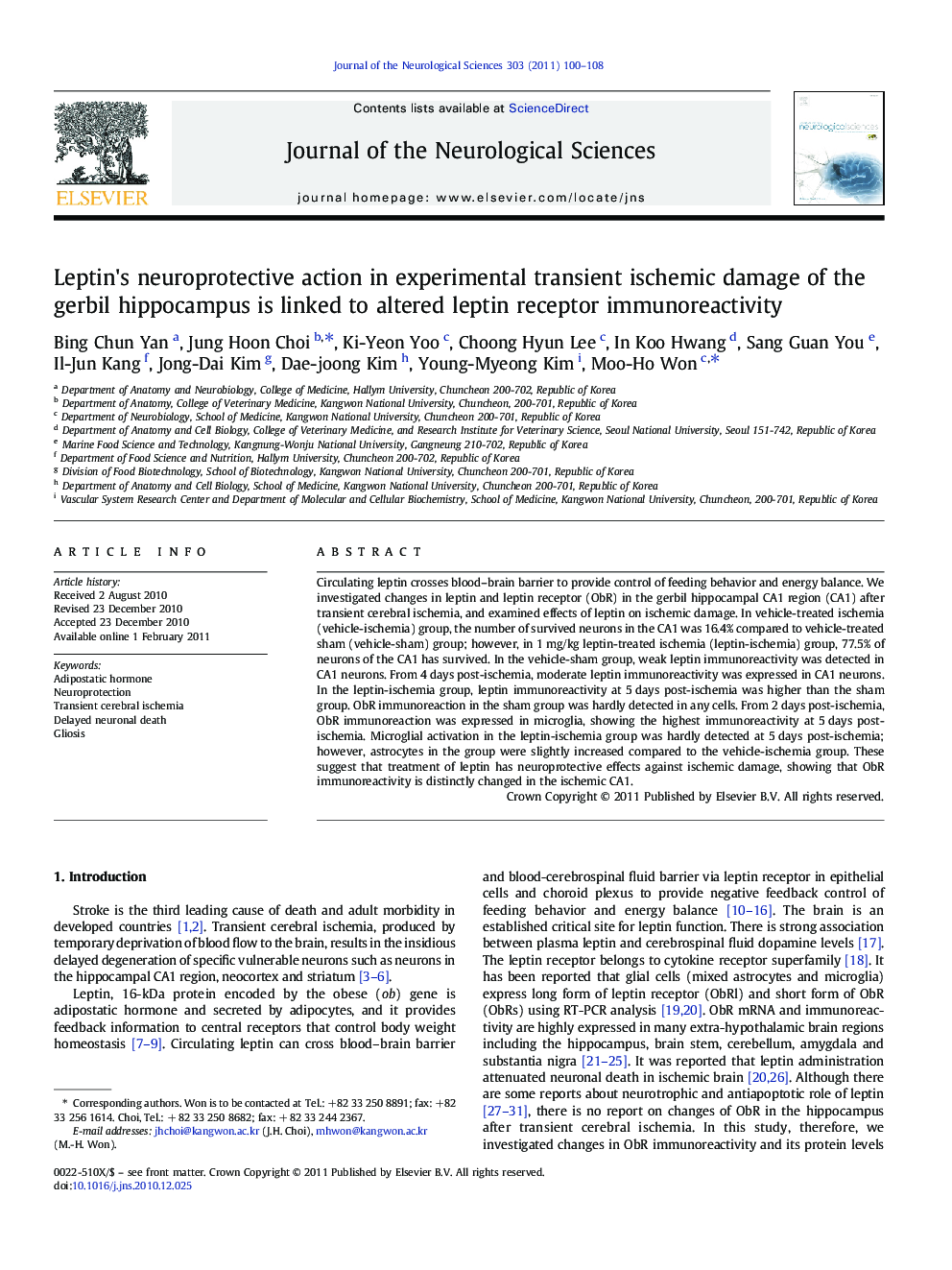| Article ID | Journal | Published Year | Pages | File Type |
|---|---|---|---|---|
| 8282706 | Journal of the Neurological Sciences | 2011 | 9 Pages |
Abstract
Circulating leptin crosses blood-brain barrier to provide control of feeding behavior and energy balance. We investigated changes in leptin and leptin receptor (ObR) in the gerbil hippocampal CA1 region (CA1) after transient cerebral ischemia, and examined effects of leptin on ischemic damage. In vehicle-treated ischemia (vehicle-ischemia) group, the number of survived neurons in the CA1 was 16.4% compared to vehicle-treated sham (vehicle-sham) group; however, in 1Â mg/kg leptin-treated ischemia (leptin-ischemia) group, 77.5% of neurons of the CA1 has survived. In the vehicle-sham group, weak leptin immunoreactivity was detected in CA1 neurons. From 4Â days post-ischemia, moderate leptin immunoreactivity was expressed in CA1 neurons. In the leptin-ischemia group, leptin immunoreactivity at 5Â days post-ischemia was higher than the sham group. ObR immunoreaction in the sham group was hardly detected in any cells. From 2Â days post-ischemia, ObR immunoreaction was expressed in microglia, showing the highest immunoreactivity at 5Â days post-ischemia. Microglial activation in the leptin-ischemia group was hardly detected at 5Â days post-ischemia; however, astrocytes in the group were slightly increased compared to the vehicle-ischemia group. These suggest that treatment of leptin has neuroprotective effects against ischemic damage, showing that ObR immunoreactivity is distinctly changed in the ischemic CA1.
Related Topics
Life Sciences
Biochemistry, Genetics and Molecular Biology
Ageing
Authors
Bing Chun Yan, Jung Hoon Choi, Ki-Yeon Yoo, Choong Hyun Lee, In Koo Hwang, Sang Guan You, Il-Jun Kang, Jong-Dai Kim, Dae-joong Kim, Young-Myeong Kim, Moo-Ho Won,
